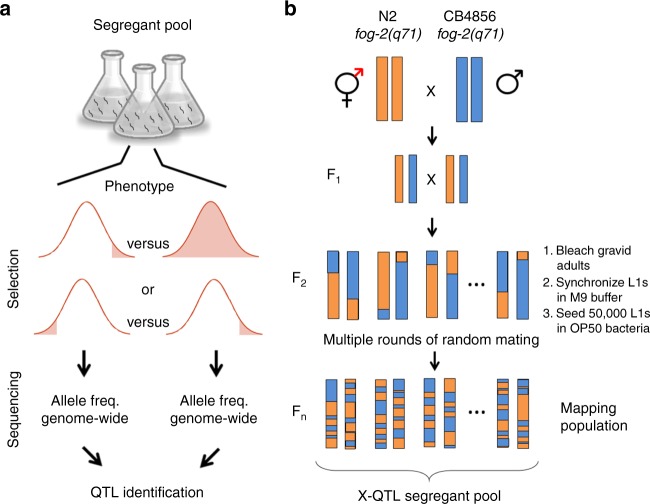Fig. 1.
Implementing eXtreme quantitative trait loci (X-QTL) in C. elegans. a The principle underlying X-QTL. A large population of recombinant individuals is selected based on a trait of interest. Two types of experiments are possible. Either one tail of the distribution is selected and contrasted with the overall population or two tails of the distribution are selected and contrasted with each other. Each group is then genotyped in bulk, and differences in allele frequency between these groups identify QTLs. b To generate millions of unique recombinant individuals in C. elegans, we used parental strains carrying the fog-2(q71) allele, which abolishes selfing. The resulting population can only reproduce by outcrossing. C. elegans experiences only one crossover event in each bivalent per meiosis, leading to an effective rate of half a recombination per chromosome. To increase the total number of recombination events and the resolution of ceX-QTL, we grew the segregant pool for multiple non-overlapping generations. In every generation, eggs were isolated by hypochlorite treatment from fully gravid adults. L1 larvae were synchronized by overnight starvation in M9 buffer and seeded on nematode growth medium plates (50,000 individuals)

